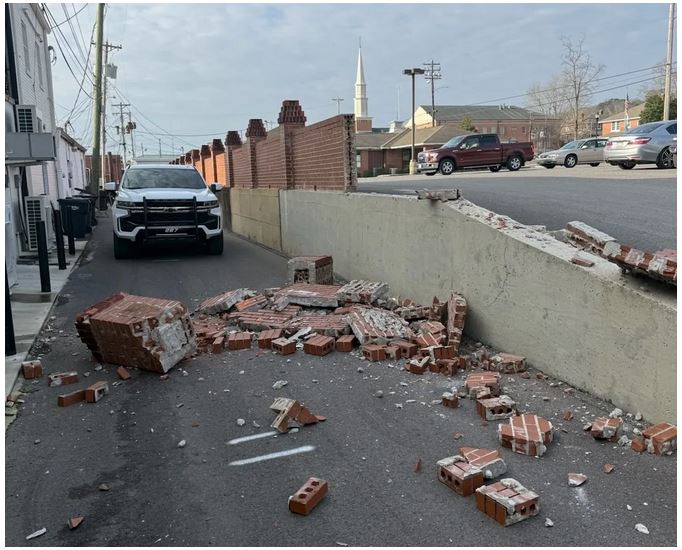
(NEW YORK) — Ukrainian President Volodymyr Zelenskyy is accusing Russia of using Chinese satellites to photograph nuclear power stations in Ukraine as part of preparations to potentially strike them.
Zelenskyy made the accusation in an interview with ABC News’ Good Morning America co-anchor Robin Roberts on Monday during a visit for the United Nations General Assembly this week in New York.
“The recent information is that, Russia has been using Chinese satellites and taking photos of the details of the objects on nuclear facilities,” Zelenskyy told Roberts. “And in our experience, if Russia takes photos of certain objects, then there is a threat of strikes against the nuclear objects.”
See more of Robin Roberts’ exclusive interview with Ukraine President Volodymyr Zelenskyy and first lady Olena Zelenska at 8:30 p.m. ET Wednesday on ABC News Live and streaming on Hulu on Thursday.
Zelesnkyy did not say whether the Chinese satellites that Russia has used were commercial satellites or controlled by the Chinese government.
He said he would share the information Ukraine has with leaders who can influence Russia, calling it “nuclear terror.”
Asked to comment on Monday, China’s embassy in Washington did not immediately respond.
If confirmed, the use of Chinese satellites to photograph Ukrainian nuclear plants would be another example of Russia turning to China for assistance in the war. It would also raise questions about the strength of Russia’s own satellite capabilities.
Since its invasion of Ukraine in 2022, Russia has turned heavily to China for assistance in supporting its economy, as well as keeping its military running. Although China has so far stopped short of directly providing weapons to Russia, Western countries and Ukraine have become increasingly concerned about the growing scale of China’s support for Moscow despite U.S. and allied sanctions.
U.S. Deputy Secretary of State Kurt Campbell last week warned the U.S. believes China is now providing direct assistance to Russia, supplying military components.
“These are not dual-use capabilities,” Campbell told reporters in Brussels, according to Politico.
“These are component pieces of a very substantial effort on the part of China to help sustain, build and diversify various elements of the Russian war machine,” he added. “We’re seeing efforts at the highest levels of both governments to try to both hide and protect certain elements of this worrisome collaboration.”
Zelensky’s allegation that the satellite imagery indicates Russia may be preparing to hit the nuclear plants follows similar warnings from his foreign minister last week.
“According to Ukrainian intelligence, [the] Kremlin is preparing strikes on Ukrainian nuclear energy critical objects ahead of winter,” foreign minister Andrii Sybiha wrote on X on Saturday.
The attacks would focus on the transmission substations and other “open distribution devices” at the nuclear stations, he wrote.
“Damage to those facilities creates a high risk of a nuclear incident with global consequences,” he wrote, adding Ukraine’s security services had shared the intelligence with its partners and that the International Atomic Energy Agency (IAEA) had been informed.
Before Russia’s invasion in 2022, Ukraine was operating four nuclear power stations. The Zaporizhzhia Nuclear Power Plant has been under Russian occupation since the first months of the invasion, but the other three remaining plants continue to supply Ukraine with power.
Some experts believe that while Russia is unlikely to directly target the reactors of nuclear plants, its frequent attacks on transformer substations linked to the plants pose a serious and worsening threat.
Russia “can and has extensively struck the transformer substations that deliver energy to the nuclear power plants and distribute power from the reactors to the rest of the country,” Dr. Jack Watling and Darya Dolzikova wrote in a report from the British defense think tank the Royal United Services Institute (RUSI), this month. “Not only do such attacks prevent the distribution of energy from the remaining unoccupied reactors to the rest of the grid, but they also pose a serious nuclear safety risk.”
Damage to the transformers can disconnect the plants from off-site power supplies, disrupting the functioning of key reactor systems, but also preventing them from offloading energy to the grid, sometimes prompting emergency shutdowns of reactors, they wrote.
Russia’s campaign to destroy Ukraine’s energy infrastructure has inflicted heavy damage, with Ukrainian and Western officials warning the country faces an extremely difficult winter. Russian strikes have cut Ukraine’s capacity to generate energy by more than half, according to Ukrainian officials and independent experts.
Ukraine’s pre-war generation was between 32 to 25 gigawatts (GW) of power. But now the country struggles to produce just 9 GW, according to the RUSI report. Authorities this summer have imposed rolling blackouts to preserve the grid, with most Ukrainians already living without power for many hours a day.
Copyright © 2024, ABC Audio. All rights reserved.



